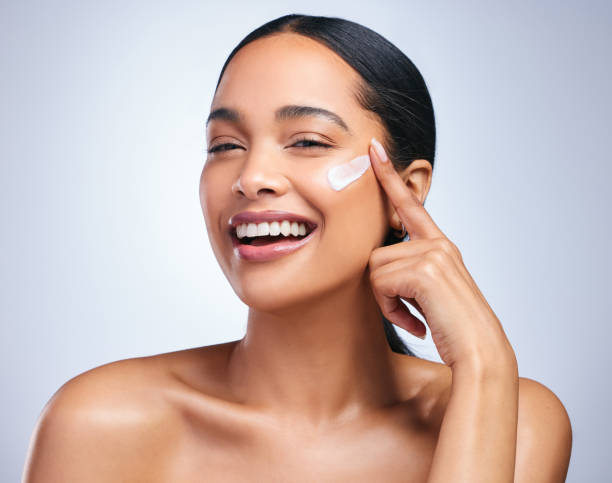Achieving healthy, radiant skin requires more than just slathering on random skincare products. For those with combination skin, the journey to a balanced complexion can be particularly challenging. Combination skin is characterized by having both oily and dry areas, often with an oily T-zone (forehead, nose, and chin) and drier cheeks. To effectively care for combination skin, it’s essential to strike a delicate balance between addressing oiliness in some areas while providing hydration to others. In this comprehensive guide, we’ll explore the intricacies of combination skin and offer tailored skincare tips and product recommendations to help you achieve optimal balance and glow.
Understanding Combination Skin:
- What is Combination Skin?
- Combination skin is a common skin type characterized by having a mix of oily and dry areas on the face.
- The T-zone (forehead, nose, and chin) tends to be oily, while the cheeks may feel dry or normal.
- Combination skin can be influenced by factors such as genetics, hormones, climate, and skincare habits.
- Identifying Combination Skin:
- Combination skin often presents with shiny or oily patches in the T-zone, enlarged pores, and occasional breakouts.
- Cheeks may feel tight, rough, or flaky, indicating dryness or dehydration.
- Combination skin can vary in severity and may change with factors like age, season, and lifestyle.
Tailoring Skincare Routines for Combination Skin:
- Gentle Cleansing:
- Opt for a gentle, sulfate-free cleanser that effectively removes impurities without stripping the skin’s natural oils.
- Use lukewarm water to cleanse the face, as hot water can exacerbate dryness and irritation.
- Exfoliation:
- Incorporate chemical exfoliants like alpha hydroxy acids (AHAs) or beta hydroxy acids (BHAs) into your routine to remove dead skin cells and unclog pores.
- Focus on exfoliating the T-zone area to control oiliness and prevent breakouts, while being gentle on drier areas to avoid over-exfoliation.
- Hydration:
- Choose lightweight, non-comedogenic moisturizers that provide hydration without adding excess oil to the skin.
- Consider using a hydrating serum or gel moisturizer on the cheeks to address dryness, while opting for oil-free formulas in the T-zone.
- Sun Protection:
- Protect your skin from harmful UV rays by wearing a broad-spectrum sunscreen with at least SPF 30 daily.
- Look for lightweight, non-greasy sunscreens that won’t exacerbate oiliness in the T-zone.
- Targeted Treatments:
- Use spot treatments or serums with ingredients like salicylic acid or niacinamide to address specific concerns such as acne, blackheads, or excess oil production in the T-zone.
- Be mindful of potential sensitivities and patch-test new products before applying them to the entire face.
- Balancing Act:
- Experiment with different skincare products and formulations to find the right balance for your skin.
- Consider using a mattifying primer in the T-zone before applying makeup to control shine throughout the day.
- Weekly Masks:
- Incorporate weekly masks into your skincare routine to address both oily and dry areas.
- Use a clay mask on the T-zone to absorb excess oil and minimize pores, while opting for a hydrating or nourishing mask on the cheeks to replenish moisture.
- Hydrating Toners:
- Incorporate hydrating toners or essences into your routine to balance hydration levels and prep the skin for subsequent skincare products.
- Look for toners with humectant ingredients like hyaluronic acid to attract moisture to the skin without clogging pores.
- Oil Control:
- Use oil-absorbing sheets or blotting papers throughout the day to gently blot away excess oil in the T-zone without disrupting makeup.
- Avoid over-washing or using harsh cleansers, as this can strip the skin and lead to rebound oiliness.
- Nighttime Repair:
- Incorporate a nourishing night cream or facial oil into your nighttime skincare routine to replenish moisture and repair the skin barrier.
- Look for ingredients like ceramides, squalane, or jojoba oil to help balance hydration levels and improve skin texture.
- Professional Guidance:
- Consult a dermatologist or skincare specialist if you’re struggling to find the right skincare routine for your combination skin.
- A professional can assess your skin’s unique needs and recommend tailored treatments and products to address specific concerns.
Product Recommendations for Combination Skin:
- Cleansers:
- Cetaphil Daily Facial Cleanser
- La Roche-Posay Effaclar Purifying Foaming Gel
- Exfoliants:
- Paula’s Choice Skin Perfecting 2% BHA Liquid Exfoliant
- The Ordinary Lactic Acid 5% + HA
- Moisturizers:
- Neutrogena Hydro Boost Water Gel
- CeraVe PM Facial Moisturizing Lotion
- Sunscreens:
- EltaMD UV Clear Broad-Spectrum SPF 46
- La Roche-Posay Anthelios Clear Skin Oil-Free Sunscreen SPF 60
- Serums:
- The Ordinary Niacinamide 10% + Zinc 1%
- COSRX Advanced Snail 96 Mucin Power Essence
Conclusion:
Balancing a skincare routine for combination skin requires a thoughtful approach that addresses both oily and dry areas while maintaining overall skin health. By incorporating gentle cleansers, targeted treatments, lightweight moisturizers, and sun protection, you can achieve a balanced complexion that feels hydrated, nourished, and comfortable. Experiment with different products and formulations to find what works best for your skin, and don’t hesitate to seek professional guidance if needed. With the right skincare routine tailored to your combination skin, you can unlock a radiant, healthy complexion that looks and feels its best every day.
Read More: 3 Times Taylor Swift Surprised Fans with Secret Album Drops
